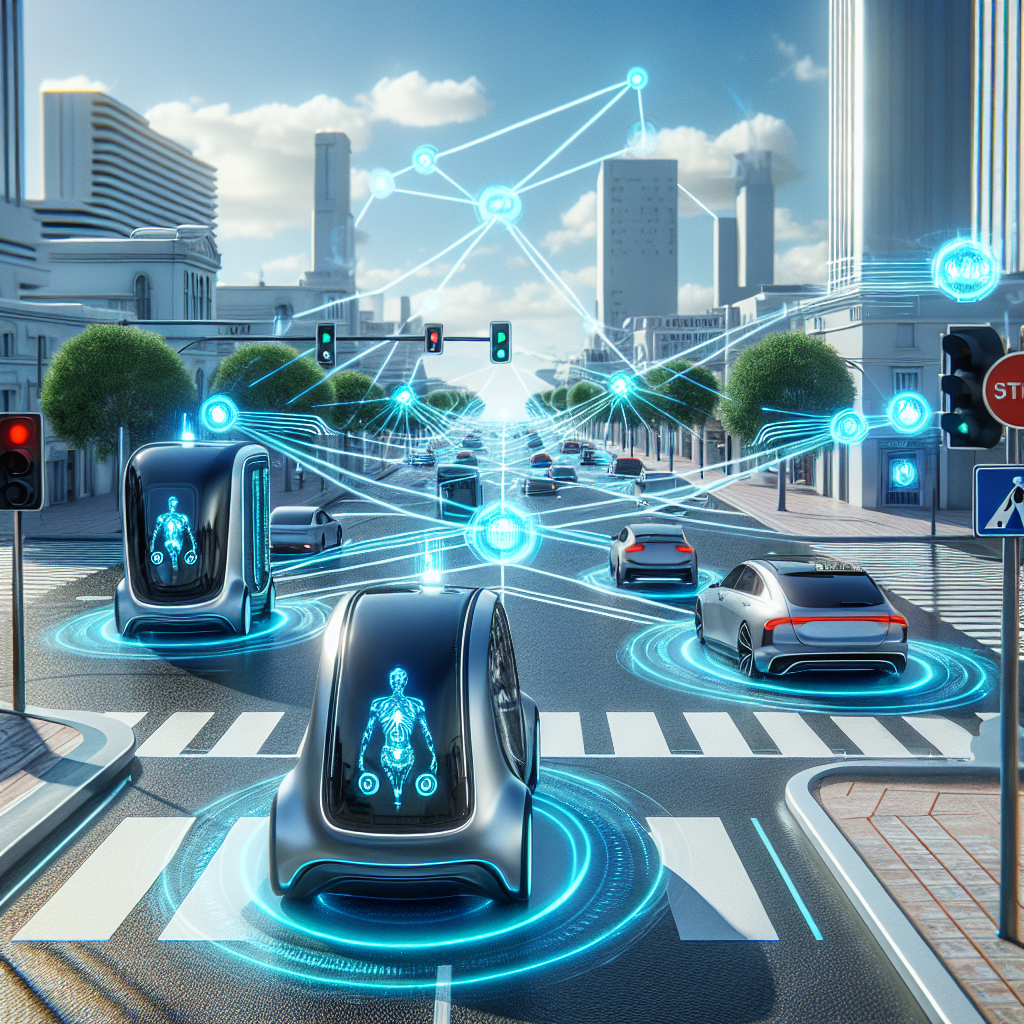Introduction
Autonomous vehicles, also known as self-driving cars, are a rapidly evolving technology that has the potential to revolutionize the way we travel. These vehicles use artificial intelligence (AI) to navigate the roads without human intervention, with the goal of improving safety and efficiency on the roads. AI development in autonomous vehicles is a key focus for researchers and engineers, as they work to make these vehicles safer and more reliable.
Improving Safety
One of the main goals of AI development in autonomous vehicles is to improve safety on the roads. Human error is a major factor in the majority of car accidents, and autonomous vehicles have the potential to significantly reduce the number of accidents caused by human error. AI-powered systems in autonomous vehicles are designed to constantly monitor the vehicle’s surroundings and make decisions based on real-time data, such as the presence of other vehicles, pedestrians, and road conditions.
One of the key technologies used in autonomous vehicles to improve safety is computer vision. Computer vision algorithms use cameras and sensors to detect objects in the vehicle’s surroundings, such as other vehicles, pedestrians, and road signs. These algorithms can accurately identify and track objects in real-time, allowing the vehicle to make decisions to avoid collisions or other hazards.
Another important technology used in autonomous vehicles is machine learning. Machine learning algorithms are used to analyze data collected by sensors and cameras, and learn from this data to improve the vehicle’s performance over time. For example, machine learning algorithms can be used to improve the vehicle’s ability to predict the behavior of other road users, such as pedestrians and cyclists, and make decisions to avoid potential accidents.
Efficiency on the Roads
In addition to improving safety, AI development in autonomous vehicles also has the potential to improve efficiency on the roads. Autonomous vehicles can communicate with each other and with infrastructure such as traffic lights and road signs, allowing them to coordinate their movements and optimize traffic flow. This can help reduce congestion and improve the overall efficiency of the transportation system.
AI-powered systems in autonomous vehicles can also help reduce fuel consumption and emissions by optimizing the vehicle’s speed, acceleration, and braking. By analyzing real-time data such as traffic conditions and road gradients, autonomous vehicles can make decisions to drive more efficiently and reduce fuel consumption.
Furthermore, autonomous vehicles can also improve the overall efficiency of the transportation system by reducing the need for parking spaces. Since autonomous vehicles can drop off passengers at their destination and then continue to another location, they can help reduce the amount of space needed for parking, freeing up valuable land for other uses.
FAQs
Q: How safe are autonomous vehicles compared to traditional vehicles?
A: Autonomous vehicles have the potential to be much safer than traditional vehicles, as they are not subject to human error. However, there are still challenges to overcome, such as ensuring the reliability of AI-powered systems and the ability to handle complex traffic situations.
Q: Will autonomous vehicles be able to handle all types of weather conditions?
A: Autonomous vehicles are being developed to handle a wide range of weather conditions, but there are still challenges to overcome, such as heavy rain, snow, and fog. Researchers and engineers are working to improve the sensors and algorithms used in autonomous vehicles to ensure they can operate safely in all weather conditions.
Q: How will autonomous vehicles impact jobs in the transportation industry?
A: Autonomous vehicles have the potential to disrupt the transportation industry by reducing the need for human drivers. However, there will still be a need for human oversight and maintenance of autonomous vehicles, as well as new job opportunities in areas such as data analysis, software development, and customer service.
Q: When will autonomous vehicles be widely available to the public?
A: Autonomous vehicles are already being tested on public roads in some cities, but widespread adoption is still several years away. Researchers and engineers are working to address technical, regulatory, and ethical challenges to ensure the safe and reliable deployment of autonomous vehicles.
Conclusion
AI development in autonomous vehicles has the potential to significantly improve safety and efficiency on the roads. By leveraging technologies such as computer vision and machine learning, autonomous vehicles can navigate the roads without human intervention and make decisions to avoid accidents and optimize traffic flow. While there are still challenges to overcome, researchers and engineers are working to ensure the safe and reliable deployment of autonomous vehicles in the near future.

